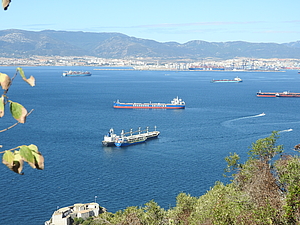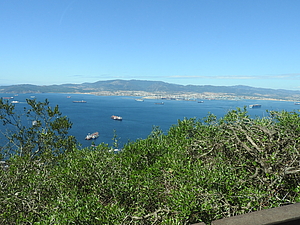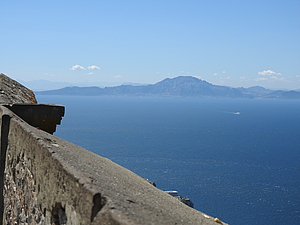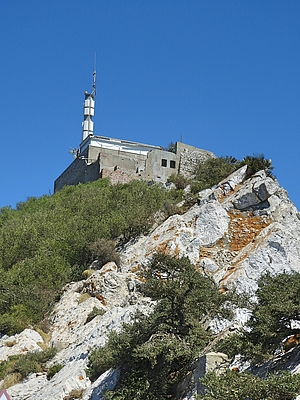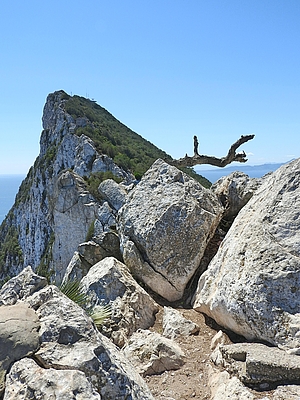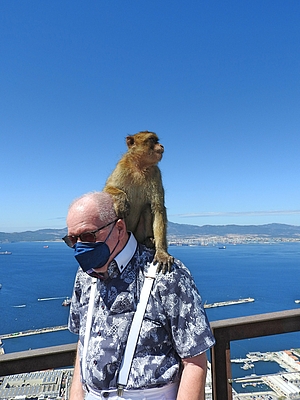Gibraltar 2021
Visit to Gibraltar September 2021
The first day of September 21 we decided to make one day excursion by car to “a neighbouring country”, Gibraltar, where none of us has been before. My story of Gibraltar consists of various internet sources of compiled information and my own observations.
Gibraltar´s territory has an area only of 6,7 square kilometres with a defining Rock 426 meter high, which divides the isthmus into two coasts, the East Side and the West Side, both Mediterranean coasts. At the bottom of the Rock of Gibraltar, we visited a flat area occupied by so called Europa point, which includes Trinity Lighthouse, a chapel of Nuestra Señora de Europa, and most imposing Mosque of the Custodian of the Holy Mosque. There is also a memorial of prime minister-in-exile of Poland general Sikorski who died here 1943 in a plane crash. 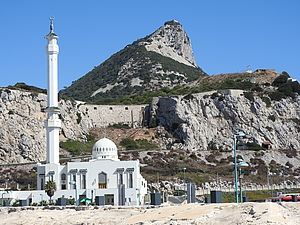
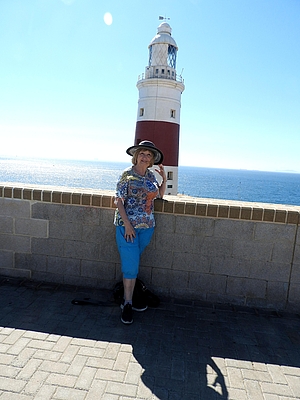
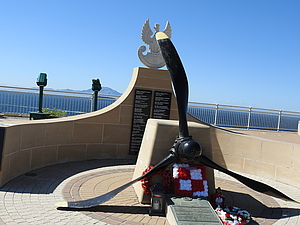
Gibraltar was first inhabited over 50,000 years ago by the first humanoids which we nowadays call Neanderthals. Their presence was proven when in 1848 the first known adult Neanderthal skull was excavated at Forbes´ Quarry. Had the skull been recognized for what it was at the time of discovery, the species might have been named Gibraltarians rather than Neanderthals.
My remark: In Germany, the first humanoid fossils were found in the valley of Neanderthal only 7 years later.
Gibraltar's recorded history began around 950 BC with the Phoenicians, followed by Carthaginians and Romans who worshiped Hercules in shrines built on the Rock of Gibraltar, which they regarded as one of the two traditional Pillars of Hercules.
The legend: According to Roman mythology, during his journey to accomplish twelve labours, Hercules had to cross the Atlas Mountains. Rather than climb them, Hercules stamped his foot creating the Straits and a channel between the Mediterranean and the Atlantic. The Romans then fixed the two pillars as Calpe (Gibraltar) and Mons Abila (present-day Monte Hacho, a rather insignificant hill overlooking Spanish territory Ceuta in Africa). Later scholars decided that the much more imposing Jebel Musa in Morocco was more likely to be the southern pillar. The argument, which is the southern pillar of Hercules, continues to this day.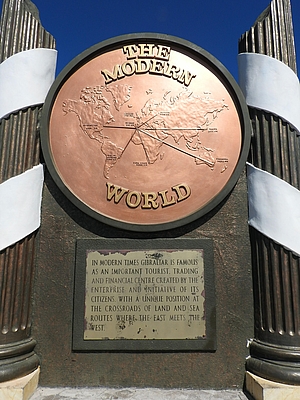
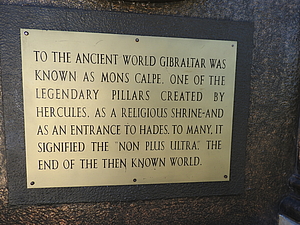
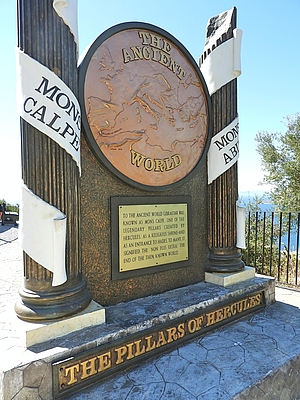
My remark: It was good to recover my memory reading about all Twelve Labours of Hercules (in Greek Heracles). On the Upper Rock there is a monument with maps showing the ancient world known in the time of Romans and the modern world.
Gibraltar came under the Muslim rule in 711 AD. The Christian Crown of Castile annexed it in 1309, lost it again to the Moors in 1333 and finally regained it in 1462. Gibraltar became part of the unified Kingdom of Spain and remained under Spanish rule until 1704.
My remark: It is typical for this part of the World that Muslim rule was changed by Christian rule and vice versa many times. We visited a remnant of this Moorish rule called the Moorish Castle. Originally built in the eighth century and rebuilt in the 14th century, much of the castle has been destroyed over time, although the parts that do remain - including the tall Tower of Homage, a massive gatehouse, offers very impressive views. It is the highest Islamic structure of its kind left standing on the Iberian Peninsula.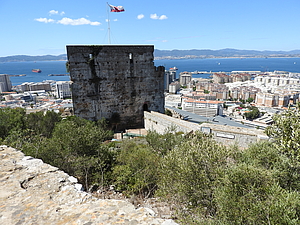
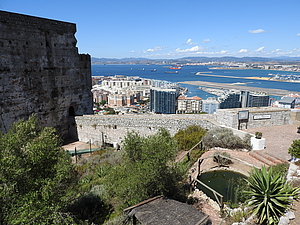
Gibraltar has always been an apple of discord between the English and Spanish.
English military presence was briefly established at Gibraltar for the first time already in 1620. The Spanish granted permission for the English fleet to use Gibraltar's port as a base for operations against the Barbary pirates, who were raiding the British and Irish coasts. Some in England had ambitions to turn the fleet against Spain rather than the Barbary Coast. However, the king James I successfully resisted pressure of the Parliament to declare war on Spain and the fleet returned to England. After Charles I ascended the throne in 1625, a second English fleet was sent to the region with instructions to "take or spoil a town" on the Spanish coast. Gibraltar was one of the proposed targets on the basis that it was small, could easily be garrisoned, supplied and defended, and was in a highly strategic location. The English fleet instead attacked Cádiz (around 100 km distance from Gibraltar) in the belief that its sacking would be more immediately profitable, but the expedition turned into a full fiasco. The landing force looted the town's wine stores and was evacuated after four days of mass drunkenness without anything useful having been achieved.
Gibraltar was definitely captured by an Anglo-Dutch fleet during the War of the Spanish Succession (1701 – 1714). At the end of the war, Spain ceded the territory to Britain as a part of the Treaty of Utrecht of 1713. The Article X said that town, fortifications and port (but not the hinterland) were ceded to Britain "for ever, without any exception or impediment whatsoever." The Treaty also stipulated that if Britain was ever to dispose of Gibraltar it would first have to offer the territory to Spain.
My remark: Obviously, this article no.10 is causing problems till the present time, as accordingly, Gibraltar has no option of independence, unless both countries agree. It has to be either British, or, if Britain gives it up, Spanish. It seems that Gibraltarians would prefer not to be a colony anymore and become independent as other British former colonies, but if they can´t get it, their majority prefers to remain under British rule with more extensive rights for self-determination than they could possibly get from Spain.
The first attempt to nullify this agreement occurred 1727, under the pretext that Britain had violated its terms by extending Gibraltar's fortifications beyond the permitted limits, allowing Jews and Moors to live there, failing to protect Catholics and harming Spain's revenues by allowing smuggling. Spanish forces a began a siege of Gibraltar causing severe damage through intensive cannon fire. However, the defenders withstood the threat and were reinforced and resupplied by a British naval force. Bad weather and supply problems caused the Spanish to call off the siege.
The second unsuccessful attempt, the so called Great Siege of Gibraltar, was carried out by Spain and France during the American War for Independence when Spain hoped that British military power would be weakened. The siege started in June 1779 and was suspended in February 1783 at the beginning of peace talks with the British.
My remark: We visited the Great Siege Tunnels which are an engineering marvel of that time, carved out in the northern face of the Rock, using only manual labour, built by the British only in six weeks. The tunnels played a major part in the defeat of combined forces of France and Spain. Nowadays, there is museum in the tunnels, reminding its military history. 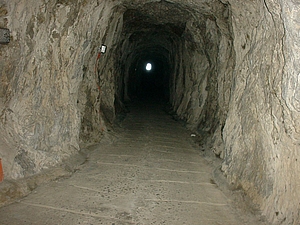
The victorious outcome of the Great Siege made it politically impossible for the British government to again consider trading away Gibraltar, even though King George III warned that it would be the source "of another war, or at least of a constant lurking enmity" and expressed his wish "if possible to be rid of Gibraltar ... I shall not think peace complete if we do not get rid of Gibraltar." But the British General Eliott and the garrison were lauded for their heroism, and the tenacity of their defense of Gibraltar acquired, as one writer puts it, "a sort of cult status". The British public acquired "an emotional, albeit irrational, attachment to the place." The reputed impregnability of Gibraltar gave rise to the expression, which is still current today, of something being as "strong as the Rock of Gibraltar."
My remark: As it was the longest siege in the history of Gibraltar and possibly in the British military history, which finished by British victory, it is clear that it awakened strong nationalist sentiments which are inherent in many British even today.
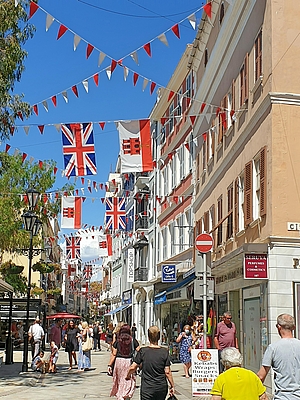
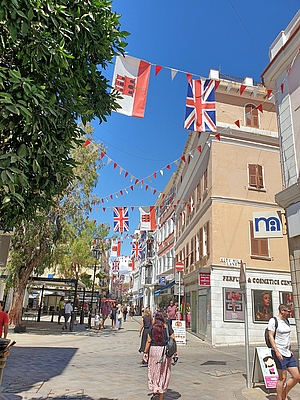 Following the Great Siege, the civilian population of Gibraltar – which had fallen to under a thousand – expanded rapidly as the territory became both a place of economic opportunity and a refuge from the Napoleonic Wars. Britain's loss of North American colonies in 1776 led to much of her trade being redirected to new markets in India and the East Indies. The favoured route to the east was via Egypt, even before the Suez Canal had been built, and Gibraltar was the first British port reached by ships heading there.
Following the Great Siege, the civilian population of Gibraltar – which had fallen to under a thousand – expanded rapidly as the territory became both a place of economic opportunity and a refuge from the Napoleonic Wars. Britain's loss of North American colonies in 1776 led to much of her trade being redirected to new markets in India and the East Indies. The favoured route to the east was via Egypt, even before the Suez Canal had been built, and Gibraltar was the first British port reached by ships heading there.
During the Napoleonic Wars (1803 – 1815) Gibraltar served as a base for Lord Nelson in his efforts to bring the French Admiral Pierre-Charles Villeneuve to battle which culminated 1805 at Trafalgar. In this battle, Nelson was killed and Villeneuve captured. After peace returned, Gibraltar underwent major changes during the reformist governorship of General Sir George Don, who took up his position in 1814. A City Council was established in 1821, and in 1830 Gibraltar became a Crown colony.
Visiting Gibraltar in the mid-19th century, the English writer Richard Ford made in his "Handbook for Travelers in Spain" the following comments: "The differences of nations and costumes are very curious: a motley masquerade is held in this halfway house between Europe, Asia, and Africa, where every man appears in his own dress and speaks his own language. Civilization and barbarism clash here indeed ... or the Rock is a refuge for destitute scamps, and is the asylum for people of all nations who expatriate themselves for their country's good. The entire commerce of the Peninsula seems condensed into this microcosmos, where all creeds and nations meet, and most of them adepts at the one grand game of beggar my neighbour."
My remark: As per this report and also others, at that time Gibraltar became a melting pot of nations, but was far from any prosperity.
By the end of the 19th century, the "Gibraltarians" were given an official identity for the first time. It was only in the 1830s that Gibraltar-born residents began to outnumber foreign-born, but by 1891 nearly 75 % of the population of 19,011 people were Gibraltar-born. In addition to the 14,244 Gibraltarians, there were also 711 British people, 695 Maltese and 960 from other British dominions. There were 1,869 Spaniards (of whom 1,341 were female) with smaller numbers of Portuguese, Italians, French and Moroccans.
In the 1st World War Gibraltar remained neutral, in the 2nd World War, during the Battle of the Atlantic, it played a key role, as the destination of the Central Atlantic convoy route between the United States and the Mediterranean in support of Allied operations in North Africa, Sicily, Italy and elsewhere in the region.
Gibraltar's post-war relationship with Spain was marred by an intensification of the long-running dispute over the territory's sovereignty. Although Spain had not attempted to use military force to regain Gibraltar since 1783, the question of sovereignty was always there. Disputes over smuggling and the sea frontier between Gibraltar and Spain had repeatedly caused diplomatic tensions during the 19th century. The neutral zone between Spain and Gibraltar had also been a cause of disputes during the 19th and 20th centuries. This originally had been an unmarked strip of sand on the isthmus between the British and Spanish lines of fortifications, about 1 kilometre wide – the distance of a cannon shot in 1704. Over the years, however, Britain took control of most of the neutral zone, much of which is now occupied by Gibraltar's airport. This expansion provoked repeated protests from Spain.
My remark: We were driving by car over the runway of this airport, the road is dividing it into two halves – it is strange to think that a plane may land next to you any minute.
Spain's push to regain sovereignty over Gibraltar was fueled by the efforts of the United Nations for decolonization which had been initiated in 1946. But the option to become independent was not available to Gibraltar under the terms of the Treaty of Utrecht, which required that if Britain ever relinquished control it was to be handed back to Spain, which Gibraltarians strongly opposed vigorously asserting their right to self-determination.
The dispute initially took the form of symbolic protests and a campaign by Spanish diplomats and the state-controlled media. However, from 1954, Spain imposed increasingly stringent restrictions on trade and the movements of vehicles and people across the border with Gibraltar. Further restrictions were imposed in 1964, and in 1966 the frontier was closed to vehicles. The following year, Spain closed its airspace to aircraft taking off or landing at Gibraltar International Airport. In 1969, the new Gibraltar Constitution Order was passed. Spain strongly objected and as a result, the frontier was closed completely and Gibraltar's telecommunications links through Spain were cut.
My remark: As usual each party had some valid arguments in this quarrel. But at the same time, as usual, the main victim of these fights was the population on both sides, as the contemporary report describes it: „The saddest sight was seeing people behind the wire fences on both sides of the land frontier yelling at the top of their voices across the wide dividing space to enquire about the state of relatives, as telephone communications had been cut by the Spaniards. Local housewives with Spanish relatives in the Campo area kept their radios tuned to the nearby Spanish stations for news of family members who were gravely ill.”
Franco's death in 1975 led to the beginnings of diplomatic movement between Britain and Spain on the Gibraltar issue, although not immediately. An agreement was reached in Brussels in 1984, which clarified the original Lisbon Agreement of 1980 and required that Britain allow Spaniards to live and work in Gibraltar, which they would have the right to do anyway as EEC citizens when Spain joined EEC in 1986. The border was finally fully reopened on 4–5 February 1985.
My remark: Only the membership of all concerned parties in the European Union could sort out the problem (similarly as EU helped to resolve the problem Britain had with Ireland). This seems to be often forgotten.
In the nineties the military cutbacks inevitably had major implications for Gibraltar's economy, which had up to that point depended largely on defense expenditure. Tourism constitutes the most important economic pillar. The government also encouraged the development of new industries such as financial services, duty-free shopping, casinos and Internet gambling. Branches of major British chains and department store, e.g. Marks & Spencer, were opened in Gibraltar to encourage visits from British expatriates on the nearby Costa del Sol.
My remark: We visited Marks and Spencer which is quite an unimpressive shop on the Main Street. We cannot imagine that somebody would want to buy something from their selection of clothes which reminded me of a sale in the fifties or sixties.
To facilitate the territory's economic expansion, a major programme of land reclamation was carried out; a tenth of Gibraltar's present-day land area was reclaimed from the sea. These initiatives proved enormously successful. As of 2013, Gibraltar was ranked as the second most prosperous territory within the European Union and the 18th most prosperous worldwide in terms of gross domestic product/purchasing power per capita.
Statistically, it may be true. No wonder, on one hand the government supports duty free, casinos, gambling and the finance sector certainly closes an eye when some black money needs to be laundered, and on the other hand the population number is small. The truth is that Gibraltar has reclaimed a lot of land from the sea and there is a lot of construction activity to be seen everywhere. But there are no notable signs of high standard of living or wealth as e.g. in Dubai or Hong Kong, or even in Marbella. Everything, including cars, shops, restaurants, is more like lower middle class than anything else.
Gibraltar became an object of another feud in connection with Brexit. After long discussions connected with mutual threats there is a new preliminary deal between the UK and Spain for Gibraltar which means that the British colony will join the Schengen Area for passport-free travel, and will now be included in the Schengen Agreement between the other 26 member countries. The 271,000 inhabitants of Gibraltar will now be permitted freedom of movement to Spain and the other Schengen countries, and all Schengen nationals will be able to travel to Gibraltar without undergoing passport checks. However, as the UK is not and has never been a part of the Schengen Area, British citizens will still be required to go through passport controls to gain entry to Gibraltar.
My remark: On arrival to Gibraltar and on departure back to Spain, there were queues of cars which probably were unknown before. The check of identity documents was random. Nobody was bothered about vaccination certificate or negative Covid test at all. The taxi driver explained to us that they were all vaccinated by now but there was still mask obligation inside the public places. However, most of the traffic over the border were pedestrians, who were crossing in droves in both directions. It is clear that Gibraltar could not easily replace all the Spanish people working there and many Spaniards would lose their jobs if the border traffic would be restrained.
Being a tourist in Gibraltar:
Besides already mentioned sights, there is more to be seen in Gibraltar. In the middle of the Rock there is St. Michael´s Cave. If the siege tunnels were carved into the rock by humans, St. Michael´s Cave is an amazing work of nature. The largest of the island's more than 150 caves, it lies at least 274 meters above sea level and is crammed full of spectacular stalactites and stalagmites. A visit is accompanied by coloured light effects and music. The cave has many legends associated with it, including one suggesting the place is secretly connected to Africa via a 24-kilometer-long tunnel. 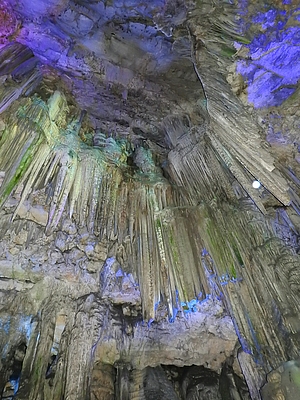

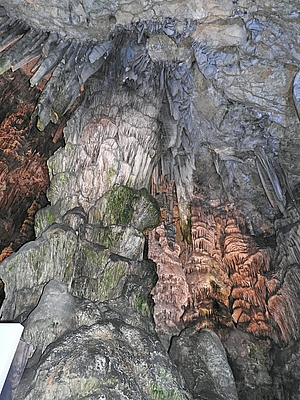
A new attraction completed on the upper Rock only in 2018 is the Skywalk. Its glass floor is perched 340 meters above the Mediterranean and if you can overcome natural fear of heights, (which we did), it offers stunning views in all directions. In the vicinity, there is another new attraction which we had no time to experience, the Windsor Suspension Bridge connected by a series of fun walking trails.
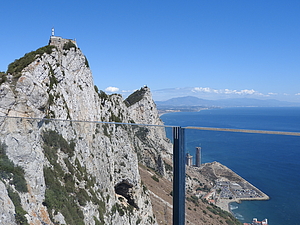
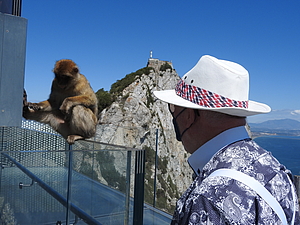
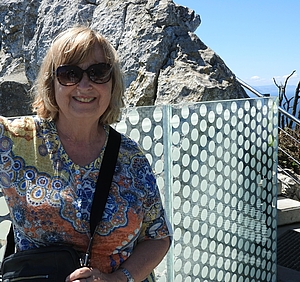
The most famous attraction of Gibraltar is the Upper Rock Nature Reserve. It is a good place to see some of the millions of birds that stop over while migrating between Africa and Europe. However, the most popular is so called Monkey´s Den with around 300 Barbary macaques roaming around. Originally from the Atlas Mountains and the Rif Mountains of Morocco, the Barbary macaque population in Gibraltar is the only wild monkey population on the European continent. There is a legend connected with the monkeys of Gibraltar which says if the monkeys disappear from Gibraltar so will the British which is why during the Second World War when their numbers were dwindling Winston Churchill sent to North Africa for replacements. They are a tailless species, they are also known locally as rock apes, despite being classified in Latin as Macaca sylvanus. However, local people simply refer to them as monos (English: monkeys) when talking about them in Spanish or local language Llanito, Andalusian Spanish which uses heavily words from English and other languages.
Whatever they are called, the monos are cute although the guides are warning about them, they were quite harmless.
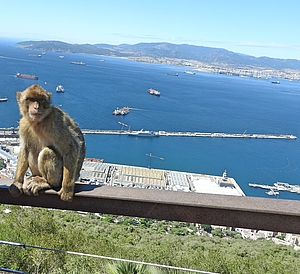
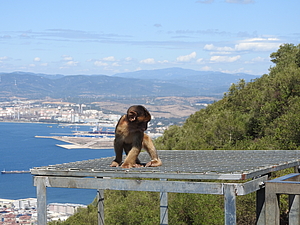
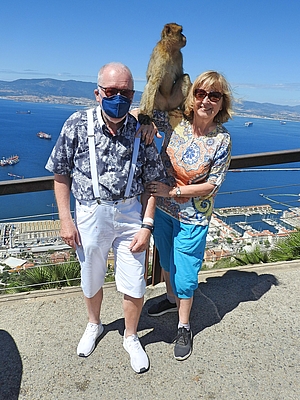
Conclusion: Gibraltar is a country with turbulent history and some wild natural beauty. Originally we thought that there is only the Rock and the apes. But obviously there are many interesting things to see including some which we had even not enough time to do (Botanic Gardens, dolphin watching, ride on a cable car, National Museum). Gibraltar is only about 50 km distance from our Estepona flat. However, it is our opinion that the Spanish surrounding, and especially Estepona, is more beautiful with more possibilities of cultural and social activities and definitely suits us better. Living in Gibraltar would give a sort of claustrophobic feeling in spite of the fact that the country tries to make an impression of a little England (including the red English letter boxes and the currency, which is British pound).
